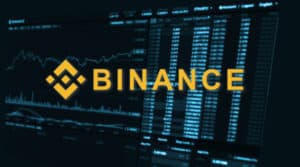
2023-1-27 18:23 |
Exasperation. Irony. Apathy. This week’s story about Binance and its mismanagement of reserves raises many emotions.
If you missed it, Bloomberg reported that Binance “mistakenly” pooled collateral for some of the crypto assets it issues with customer funds, with the report citing an unidentified Binance spokesperson.
The summary is as follows. Binance issued B-Tokens, with reserves for approximately half of these assets stored in a cold wallet. Fine – makes sense. The only problem is, the cold wallet contains more funds than required to back the B-Tokens. Given the assets are meant to be backed 1:1, this is not what should be happening. It’s a problem that means the collateral is being commingled with customers’ tokens, Bloomberg reported.
“Collateral assets have previously been moved into this wallet in error and referenced accordingly on the B-Token Proof of Collateral page,” the spokesperson told Bloomberg. Woops.
“Binance is aware of this mistake and is in the process of transferring these assets to dedicated collateral wallets” the spokesperson added.
PTSD for crypto investorsWhat makes this whole thing so sensitive – and disappointing – is what has happened industry-wide over the last few months. FTX infamously collapsed in November following revelations that founder Sam Bankman-Fried had commingled customer assets with his trading firm Alameda Research, before suffering heavy losses and ultimately leaving an $8 billion hole on the balance sheet where customer funds should have been.
Bankman-Fried was arrested, extradited to the US and is currently under house arrest in California.
This sparked a push across the industry for exchanges to publish proof of reserves and become fully audited. The problem, however, was that the reports cleared up nothing. Mazars, the accounting firm hired to oversee Binance’s report, abruptly ceased dealing with all crypto companies after the debacle drew heavy criticism.
I appeared on CNBC earlier this month decrying how these reports were far from the “audits” that they claimed to be, lamenting that these exchanges remained incredibly opaque. Nothing has changed since (starts at 5:37).
Lack of transparency continues for cryptoThis story, revealing that Binance mistakenly pooled reserves with customer assets, is a further reminder of quite how vulnerable customers are to these big exchanges. To be clear, there is no evidence at all that Binance is doing anything shady, but the kicker is that there is also no way of verifying that they aren’t, because the information is just not public.
We don’t know anything about Binance’s liabilities. We don’t know anything about whether it uses its own token, BNB, as collateral. We don’t know anything about a lot of what goes on beyond the scenes. We are forced to trust CEO Changpeng Zhao.
Again, this is not to say that there is anything showing we should not trust Zhao. I am a big fan of his and have written favourably of him in the past. He has been a fantastic leader for Binance and a tremendous personality for crypto.
My problem is that the crypto industry should not be in a position where they are required to blindly trust an individual or company. CZ says that to confirm Binance doesn’t owe anybody money, we should just “ask around”. Well, CZ, I’m asking around.
yes, but liabilities are harder. We don't owe any loans to anyone. You can ask around.
— CZ 🔶 Binance (@cz_binance) December 7, 2022 2008 all over againWhatever happened to the fact that crypto was trustless? “Don’t trust, verify” has become something of a calling card. Tell me – how do you verify that Binance is good for it? How do verify that any of these firms are? You can’t. It’s just a case of “Trust me bro”.
Remember, Bankman-Fried infamously tweeted that “FTX has enough to cover all client holdings” and that “we don’t invest client assets (even in treasuries)”. He also tweeted that “FTX is fine. Assets are fine”. Two days later, he deleted the tweets, and FTX filed for bankruptcy later that week.
Bankman-Fried is far from the only founder to plead the world to ignore silly “FUD” about insolvency issues, that Bob Marley was right when he sang every little thing is gonna be all right”. FUD supposedly stands for “fear, anxiety and doubt”, but in reality is often used by crypto defenders to describe extremely reasonable questions for which answers are not available in the public domain.
Alex Mashinsky, the former CEO of crypto lender Celsius, also had the below gem of a tweet last May. His company suspended withdrawals a few weeks later, subsequently filing for bankruptcy with $4.7 billion owed to customers. The case continues to move through courts.
There are many more, but why go on?
The great irony of all this is that the crypto industry grew so much out of the distaste for institutions that arose out of the 2008 Great Financial Crisis. Crypto was meant to be a new financial system, the peoples’ way to build beyond the stress points of the established system which all came tumbling down in 2008.
Yet here we are, blindly clinging to CEO’s tweets on Twitter that it’s all fine. The fact the crypto industry is again riding this merry-go-round, as Binance and all these other centralised companies refuse to do the simple thing and just publicise their holdings, is exhausting.
Assets held with the exchange “have been and continue to be backed 1:1,” the Binance spokesperson added.
I hope he’s right. But that’s all you can do right now: hope. Perhaps “Don’t trust, Verify” should be altered to “Don’t trust, Just blindly hope for the best”.
The post Open letter to crypto: What is wrong with this industry? Binance pools customer funds with collateral appeared first on Invezz.
origin »Binance Coin (BNB) на Currencies.ru
|
|















